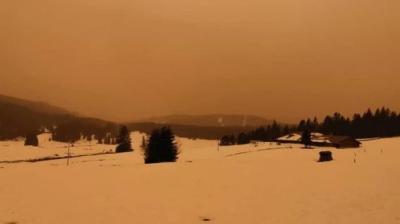WMO Airborne Dust Bulletin No. 8 – July 2024
- Sand and dust storm activity in 2023 above long-term average
- Sand and dust storms have major environmental, economic and health impacts
- Poor land and water management aggravate the problem
- Improved monitoring and forecasting strengthens early warnings
WMO's annual report on the incidence of sand and dust storms, as well as their impacts on society, shows that dust concentrations in the worst hit areas in 2023 were above the long-term average, but slightly lower than 2022. The most severe storm of the year swept across Mongolia in March 2023, affecting more than 4 million square kilometres, including 20 provinces in China. It was released for the International Day of Combating Sand and Dust Storms on 12 July.
Every year, around 2,000 million tons of dust enters the atmosphere, darkening skies and harming air quality in regions that can be thousands of kilometers away, and affecting economies, ecosystems, weather and climate. Much of this is a natural process, but a large part of it is the result of poor water and land management. Monitoring and forecasting accuracy has improved in recent years due to the progress of numerical models and observation systems. The WMO Sand and Dust Storm Warning Advisory and Assessment System (SDS-WAS), set up in 2007, strives to improve warnings through dedicated regional centres and combines research and operational work. It is not all bad news. The long-range transport of sand and dust across oceans is also a valuable source of nutrients and important for the international management of fisheries.
WMO Airborne Dust Bulletin No. 8 (July 2024)
About the WMO Airborne Dust Bulletin series
The annual WMO Airborne Dust Bulletin reports on the incidence and hazards of sand and dust storms, which have a major impact on air quality, health, the environment, agriculture and economies.
Every year, around 2,000 million tons of dust enters the atmosphere and can be transported for hundreds of kilometers. Much of this is a natural process, but a large part of it is the result of poor water and land management.
Forecasts have improved greatly thanks to the WMO Global Sand and Dust Storm Warning Advisory and Assessment System, which coordinates international sand and dust research and has operational regional centres.




